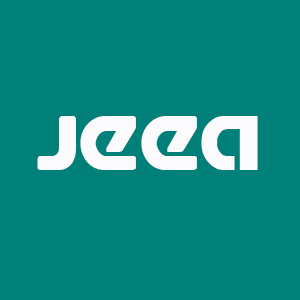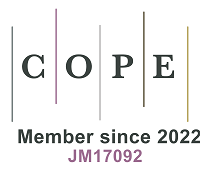REFERENCES
1. Rahman M, Brazel C. The plasticizer market: an assessment of traditional plasticizers and research trends to meet new challenges. Prog Polym Sci 2004;29:1223-48.
2. Immergut EH, Mark HF. Principles of Plasticization. In: Platzer NAJ, editor. Plasticization and plasticizer processes. Washington: American Chemical Society; 1965. pp. 1-26.
3. Halloran MW, Nicell JA, Leask RL, Marić M. Small molecule plasticizers for improved migration resistance: investigation of branching and leaching behaviour in PVC blends. Mater Today Commun 2021;29:102874.
4. Vieira MGA, da Silva MA, dos Santos LO, Beppu MM. Natural-based plasticizers and biopolymer films: a review. Eur Polym J 2011;47:254-63.
5. Wang J, Dong Z, Li X, et al. Intra-urban levels, spatial variability, possible sources and health risks of PM2.5 bound phthalate esters in Xi'an. Aerosol Air Qual Res 2018;18:485-96.
6. Guida Y, Capella R, Weber R. Chlorinated paraffins in the technosphere: a review of available information and data gaps demonstrating the need to support the stockholm convention implementation. Emerg Contam 2020;6:143-54.
7. Nevondo V, Okonkwo OJ. Status of short-chain chlorinated paraffins in matrices and research gap priorities in Africa: a review. Environ Sci Pollut Res Int 2021;28:52844-61.
8. European Chemical Agency. Substance information: alkanes, C10-13, chloro , 2022. Available from: https://echa.europa.eu/substance-information/-/substanceinfo/100.079.496 [Last accessed on 22 Nov 2022].
9. European Plasticisers; Plasticisers information center. Plasticizers. Available from: https://www.plasticisers.org/plasticisers/ [Last accessed on 22 Nov 2022].
10. Jamarani R, Erythropel HC, Nicell JA, Leask RL, Marić M. How green is your plasticizer? Polymers (Basel) 2018;10:834.
11. European Plastisers. Plasticisers. 2020. Available from: https://www.plasticisers.org/wp-content/uploads/2019/08/Plasticisers_Factsheet_EN_MAY2020.pdf [Last accessed on 22 Nov 2022].
12. Nagorka R, Koschorreck J. Trends for plasticizers in German freshwater environments - evidence for the substitution of DEHP with emerging phthalate and non-phthalate alternatives. Environ Pollut 2020;262:114237.
13. Wilkes CE, Summers JW, Daniels C. PVC Handbook. Carls Hanser Verlag; 2005.
14. Department for Food Environment & rural affairs. summary of UK proposal to list chlorinated paraffins with carbon chain lengths in the range C14-17 and chlorination levels at or exceeding 45% chlorine by weight. Available from: https://www.gov.uk/government/publications/chlorinated-paraffins-with-carbon-chain-lengths-in-the-range-c14-17/annex-d-summary-of-uk-proposal-to-list-chlorinated-paraffins-with-carbon-chain-lengths-in-the-range-c14-17-and-chlorination-levels-at-or-exceeding-45 [Last accessed on 22 Nov 2022].
15. Glüge J, Schinkel L, Hungerbühler K, Cariou R, Bogdal C. Environmental risks of medium-chain chlorinated paraffins (MCCPs): a review. Environ Sci Technol 2018;52:6743-60.
16. Department of Industrial Works (DIW). Factory data > search factory (in Thai) Available from: https://www.diw.go.th/webdiw/search-factory/ [Last accessed on 22 Nov 2022].
17. Office of Natural Resources and Environmental Policy and Planning (ONEP). SMART EIA+. Available from: https://eia.onep.go.th/site/eia [Last accessed on 22 Nov 2022].
18. Maruyama F, Fujimaki S, Sakamoto Y, Kudo Y, Miyagawa H. Screening of phthalates in polymer materials by pyrolysis GC/MS. Anal Sci 2015;31:3-5.
19. Chiellini F, Ferri M, Morelli A, Dipaola L, Latini G. Perspectives on alternatives to phthalate plasticized poly(vinyl chloride) in medical devices applications. Prog Polym Sci 2013;38:1067-88.
20. Earls A, Axford I, Braybrook J. Gas chromatography-mass spectrometry determination of the migration of phthalate plasticisers from polyvinyl chloride toys and childcare articles. J Chromatogr 2003;983:237-46.
21. Amberg-müller JP, Hauri U, Schlegel U, Hohl C, Brüschweiler BJ. Migration of phthalates from soft PVC packaging into shower and bath gels and assessment of consumer risk. J Verbr Lebensm 2010;5:429-42.
22. Ionas AC, Dirtu AC, Anthonissen T, Neels H, Covaci A. Downsides of the recycling process: harmful organic chemicals in children's toys. Environ Int 2014;65:54-62.
23. Ashworth MJ, Chappell A, Ashmore E, Fowles J. Analysis and assessment of exposure to selected phthalates found in children’s toys in christchurch, New Zealand. Int J Environ Res Public Health 2018;15:200.
24. Almroth B, Slunge D. Circular economy could expose children to hazardous phthalates and chlorinated paraffins via old toys and childcare articles. J Hazar Mater Advance 2022;7:100107.
25. Veiga M, Bohrer D, Nascimento PC, Ramirez AG, Carvalho LM, Binotto R. Migration of phthalate-based plasticizers from PVC and non-PVC containers and medical devices. J Braz Chem Soc 2012; doi: 10.1590/s0103-50532012000100011.
26. Luo H, Sun G, Shi Y, Shen Y, Xu K. Evaluation of the Di(2-ethylhexyl)phthalate released from polyvinyl chloride medical devices that contact blood. Springerplus 2014;3:58.
27. Malarvannan G, Onghena M, Verstraete S, et al. Phthalate and alternative plasticizers in indwelling medical devices in pediatric intensive care units. J Hazard Mater 2019;363:64-72.
28. McGrath TJ, Poma G, Matsukami H, Malarvannan G, Kajiwara N, Covaci A. Short- and medium-chain chlorinated paraffins in polyvinylchloride and rubber consumer products and toys purchased on the belgian market. Int J Environ Res Public Health 2021;18:1069.
29. Guida Y, Matsukami H, Kajiwara N. Short- and medium-chain chlorinated paraffins in polyvinyl chloride consumer goods available in the Japanese market. Sci Total Environ 2022;849:157762.
30. Wang C, Gao W, Liang Y, Wang Y, Jiang G. Concentrations and congener profiles of chlorinated paraffins in domestic polymeric products in China. Environ Pollut 2018;238:326-35.
31. Chen C, Chen A, Li L, Peng W, Weber R, Liu J. Distribution and emission estimation of short- and medium-chain chlorinated paraffins in chinese products through detection-based mass balancing. Environ Sci Technol 2021;55:7335-43.
32. ECHA. Candidate list of substances of very high concern for authorisation. Available from: https://echa.europa.eu/web/guest/candidate-list-table [Last accessed on 22 Nov 2022].
33. The European Commission. Commission Regulation (EU) 2018/2005 of 17 December 2018 amending Annex XVII to Regulation (EC) No 1907/2006 of the European parliament and of the council concerning the Registration, evaluation, authorisation and restriction of chemicals (REACH) as regar. Available from: http://data.europa.eu/eli/reg/2018/2005/oj [Last accessed on 22 Nov 2022].
34. The European Commission. Commision delegated directive (EU) 2015/863 of 31 March 2015 amending Annex II to Directive 2011/65/EU of the European parliament and of the council as regards the list of restricted substances. Available from: http://data.europa.eu/eli/dir_del/2015/863/oj [Last accessed on 22 Nov 2022].
35. The European Commission. Commission regulation (EC) No 552/2009 of 22 June 2009 amending regulation (EC) No 1907/2006 of the European Parliament and of the Council on the registration, evaluation, authorisation and restriction of chemicals (REACH) as regards Annex XVII. Available from: https://eur-lex.europa.eu/LexUriServ/LexUriServ.do?uri=OJ:L:2009:164:0007:0031:EN:PDF [Last accessed on 22 Nov 2022].
36. Stockholm Convention. Decision SC-8/11: listing of short-chain chlorinated paraffins. Available from: http://chm.pops.int/Convention/ConferenceofthePartiesCOP/COPDecisions/tabid/208/Default.aspx [Last accessed on 22 Nov 2022].
37. The European Commission; Official Journal of European Union. Regulation (EU) 2019/1021 Of The European Parliament and of The Council of 20 June 2019 on persistent organic pollutants (recast). Available from: http://data.europa.eu/eli/reg/2019/1021/oj [Last accessed on 22 Nov 2022].
38. Mikkelsen SH, Clausen AJ, Kjølholt J, Lassen C, Jeppesen CN, Clausen AJ. Survey of selected phthalates. The danish environmental protection agency, 2014. Available from: http://www2.mst.dk/Udgiv/publications/2014/01/978-87-93026-95-7.pdf [Last accessed on 22 Nov 2022].
39. Zellmer S, Heiserich L, Kappenstein O, Merkel S, Schulte A, Luch A. MCCP: are medium-chain chlorinated paraffins of concern for humans? Arch Toxicol 2020;94:955-7.
40. Ministry of Industry. Notification of Ministry of Industry: List of Hazardous Substances B.E. 2556 (in Thai). Royal Thai government gazette. Available from: http://reg3.diw.go.th/haz/wp-content/uploads/2016/12/announce56.pdf [Last accessed on 22 Nov 2022].
41. Ministry of Industry. Notification of Ministry of Industry: List of Hazardous Substances (5th Revision) B.E. 2562 (in Thai). Royal Thai government gazette. Available from: http://reg3.diw.go.th/haz/wp-content/uploads/2019/09/Notification161062.pdf [Last accessed on 22 Nov 2022].
42. Agency for Toxic Substances and Disease Registry. Toxicological profile for Di(2-Ethylhexyl ) phthalate, 2022. Available from: https://www.atsdr.cdc.gov/ToxProfiles/tp9.pdf [Last accessed on 22 Nov 2022].
43. Pan G, Hanaoka T, Yoshimura M, et al. Decreased serum free testosterone in workers exposed to high levels of di-n-butyl phthalate (DBP) and di-2-ethylhexyl phthalate (DEHP): a cross-sectional study in China. Environ Health Perspect 2006;114:1643-8.
44. COWI A/S. Data on mamnufacture, import, export, uses and releases of BIS (2-Ethylhexyl) Phthalate (DEHP), as well as information on potential alternatives to its use, 2009. Available from: https://echa.europa.eu/documents/10162/8fd5a74b-6807-42b6-ae1f-d1d7f04f40f8 [Last accessed on 22 Nov 2022].
45. Wu Y, Sun J, Zheng C, Zhang X, Zhang A, Qi H. Phthalate pollution driven by the industrial plastics market: a case study of the plastic market in Yuyao City, China. Environ Sci Pollut Res Int 2019;26:11224-33.
46. Jeon S, Kim KT, Choi K. Migration of DEHP and DINP into dust from PVC flooring products at different surface temperature. Sci Total Environ 2016;547:441-6.
47. Ding L, Wang S, Zhu C, Xia W, Qu C. Pollution characteristics and health risk assessment of phthalate esters in psw recycling sites: a typical case study. Bull Environ Contam Toxicol 2022;109:585-91.
48. Muenhor D, Moon HB, Lee S, Goosey E. Organophosphorus flame retardants (PFRs) and phthalates in floor and road dust from a manual e-waste dismantling facility and adjacent communities in Thailand. J Environ Sci Health A Tox Hazard Subst Environ Eng 2018;53:79-90.
49. Chakraborty P, Sampath S, Mukhopadhyay M, Selvaraj S, Bharat GK, Nizzetto L. Baseline investigation on plasticizers, bisphenol A, polycyclic aromatic hydrocarbons and heavy metals in the surface soil of the informal electronic waste recycling workshops and nearby open dumpsites in Indian metropolitan cities. Environ Pollut 2019;248:1036-45.
50. Lü H, Mo CH, Zhao HM, et al. Soil contamination and sources of phthalates and its health risk in China: a review. Environ Res 2018;164:417-29.
51. Pivnenko K, Eriksen MK, Martín-Fernández JA, Eriksson E, Astrup TF. Recycling of plastic waste: presence of phthalates in plastics from households and industry. Waste Manag 2016;54:44-52.
52. Yarahmadi N, Jakubowicz I, Martinsson L. PVC floorings as post-consumer products for mechanical recycling and energy recovery. Polym Degrad Stab 2003;79:439-48.
53. Summary for Policymakers. In: intergovernmental panel on climate change, editor. Climate change 2013-the physical science basis. Cambridge University Press; 2014. pp. 1-30.
54. CPSC. Consumer product safety improvement act (CPSIA). Washington, D.C.: 2008. Available from: https://www.cpsc.gov/s3fs-public/pdfs/blk_pdf_cpsia.pdf [Last accessed on 22 Nov 2022].
55. Stockholm Convention. Decision SC-6/13 : listing of hexabromocyclododecane. Available from: http://chm.pops.int/Convention/ConferenceofthePartiesCOP/COPDecisions/tabid/208/Default.aspx [Last accessed on 22 Nov 2022].
56. Stockholm Convention. Decision SC-8/10: listing of decabromodiphenyl ether. 2017;4-5. Available from: http://chm.pops.int/Convention/ConferenceofthePartiesCOP/COPDecisions/tabid/208/Default.aspx [Last accessed on 22 Nov 2022].
57. Hosaka A, Watanabe A, Watanabe C, Teramae N, Ohtani H. Polymer-coated sample cup for quantitative analysis of semi-volatile phthalates in polymeric materials by thermal desorption-gas chromatography-mass spectrometry. J Chromatogr A 2015;1391:88-92.
58. Kudo Y, Obayashi K, Yanagisawa H, et al. Development of a screening method for phthalate esters in polymers using a quantitative database in combination with pyrolyzer/thermal desorption gas chromatography mass spectrometry. J Chromatogr A 2019;1602:441-9.
59. International Electrotechnical; IEC Central Office.Commission. IEC 62321-8: determination of certain substances in electrotechnical products - part 8: phthalates in polymers by gas chromatography-mas spectrometry (GC-MS), gas chromatography-mas spectrometry using a pyrolyzer/thermal desorption accessory (Py/TD-GC-MS). Available from: https://webstore.iec.ch/publication/32719 [Last accessed on 22 Nov 2022].
60. Yanagisawa H, Kudo Y, Nakagawa K, Miyagawa H, Maruyama F, Fujimaki S. Simultaneous screening of major flame retardants and plasticizers in polymer materials using pyrolyzer/thermal desorption gas chromatography mass spectrometry (Py/TD-GC-MS). Molecules 2018;23:728.
61. Akoueson F, Chbib C, Monchy S, et al. Identification and quantification of plastic additives using pyrolysis-GC/MS: a review. Sci Total Environ 2021;773:145073.
62. Office of Compliance and Field Operations; U.S. Consumer Product Safety Commission. The regulated products handbook. Available from: https://www.cpsc.gov/s3fs-public/RegulatedProductsHandbook.pdf [Last accessed on 22 Nov 2022].
63. Thai Industrial Standard Institute. TIS 685-1: 2562 toys: safety requirement, part 1-requirements, 2019. Available from: https://www.stc.group/en/media/detail/1585 [Last accessed on 22 Nov 2022].
64. International Electrotechnical Commission. prEN IEC62321-12: 2022: determination of certain substances in electrotechnical products - part 12: simultaneous determination - polybrominated biphenyls, polybrominated diphenyl ethers and phthalates in polymers by gas chromatography-mass spectrometry. Available from: https://webshop.ds.dk/en/standard/M357856/dsf-pren-iec-62321-12-2022 [Last accessed on 22 Nov 2022].
65. Poitou K, Rogez-florent T, Lecoeur M, Danel C, Regnault R, Philippe V, et al. Analysis of phthalates and alternative plasticizers in gloves by gas chromatography-mass spectrometry and liquid chromatography-UV detection: a comparative study. Toxics 2021;9:1-16.
66. Bourdeaux D, Yessaad M, Chennell P, et al. ARMED study group. Analysis of PVC plasticizers in medical devices and infused solutions by GC-MS. J Pharm Biomed Anal 2016;118:206-13.
67. Gimeno P, Thomas S, Bousquet C, et al. Identification and quantification of 14 phthalates and 5 non-phthalate plasticizers in PVC medical devices by GC-MS. J Chromatogr B Analyt Technol Biomed Life Sci 2014;949-950:99-108.
68. NIST. NIST chemistry webbook. Available from: https://webbook.nist.gov/chemistry/ [Last accessed on 22 Nov 2022].
69. International Standard Organization. ISO 18219-2: 2021 leather - determination of chlorinated hydrocarbons in leather - part 2: chromatographic method for medium-chain chlorinated paraffins (MCCPs). Available from: https://www.iso.org/standard/73711.html [Last accessed on 22 Nov 2022].
70. International Standard Organization. ISO 22818:2021 textiles - determination of short-chain chlorinated paraffins (SCCP) and middle-chain chlorinated paraffins (MCCP) in textile products out of different matrices by use of gas chromatography negative ion chemical ionization mass spectrometry. Available from: https://www.iso.org/standard/73989.html [Last accessed on 22 Nov 2022].
71. International Standard Organization. ISO 18219-1:2021 leather - determination of chlorinated hydrocarbons in leather - Part 1: Chromatographic method for short-chain chlorinated paraffins (SCCPs). Available from: https://www.iso.org/standard/77798.html [Last accessed on 22 Nov 2022].
72. National Industrial Chemicals Notification and Assessment Scheme (NICNAS). Dimethyl phthalate, 2014. Available from: https://www.industrialchemicals.gov.au/sites/default/files/PEC37-Dimethyl-phthalate-DMP.pdf [Last accessed on 22 Nov 2022].
73. National Industrial Chemicals Notification and Assessment Scheme (NICNAS). Diethyl Phthalate, 2011. Available from: https://www.industrialchemicals.gov.au/sites/default/files/PEC33-Diethyl-phthalate-DEP.pdf [Last accessed on 22 Nov 2022].
74. National Industrial Chemicals Notification and Assessment Scheme (NICNAS). Diallyl Phthalate, 2008. Available from: https://www.industrialchemicals.gov.au/sites/default/files/Diallyl%20phthalate%20DAP.pdf [Last accessed on 22 Nov 2022].
75. Groh KJ, Backhaus T, Carney-Almroth B, et al. Overview of known plastic packaging-associated chemicals and their hazards. Sci Total Environ 2019;651:3253-68.
76. Geueke B, Groh K, Muncke J. Food packaging in the circular economy: overview of chemical safety aspects for commonly used materials. J Clean Prod 2018;193:491-505.
77. Horodytska O, Cabanes A, Fullana A. Non-intentionally added substances (NIAS) in recycled plastics. Chemosphere 2020;251:126373.
78. Xiu FR, Weng H, Qi Y, Yu G, Zhang Z, Zhang FS. A novel reutilization method for waste printed circuit boards as flame retardant and smoke suppressant for poly (vinyl chloride). J Hazard Mater 2016;315:102-9.
79. Kajiwara N, Matsukami H, Malarvannan G, Chakraborty P, Covaci A, Takigami H. Recycling plastics containing decabromodiphenyl ether into new consumer products including children’s toys purchased in Japan and seventeen other countries. Chemosphere 2022;289:133179.
80. Kuang J, Abdallah MA, Harrad S. Brominated flame retardants in black plastic kitchen utensils: Concentrations and human exposure implications. Sci Total Environ 2018;610-611:1138-46.
81. Fatunsin OT, Oluseyi TO, Drage D, Abdallah MA, Turner A, Harrad S. Children’s exposure to hazardous brominated flame retardants in plastic toys. Sci Total Environ 2020;720:137623.
82. Puype F, Samsonek J, Knoop J, Egelkraut-Holtus M, Ortlieb M. Evidence of waste electrical and electronic equipment (WEEE) relevant substances in polymeric food-contact articles sold on the European market. Food Addit Contam Part A Chem Anal Control Expo Risk Assess 2015;32:410-26.
83. Ting K, Gill M, Garbin O. GC/MS screening method for phthalate esters in children’s toys. J Aoac Int 2009;92:951-8.
84. Eales J, Bethel A, Galloway T, et al. Human health impacts of exposure to phthalate plasticizers: an overview of reviews. Environ Int 2022;158:106903.
85. Persistent Organic Pollutants Review Committee. Report of the persistent organic pollutants review committee on the work of its eleventh meeting: addendum risk profile on short-chained chlorinated paraffins, 2015. Available from: http://chm.pops.int/TheConvention/POPsReviewCommittee/Reports/tabid/2301/Default.aspx [Last accessed on 22 Nov 2022].
86. IARC (International Agency for Research on Cancer). IARC monographs on the evaluation of carcinogenic risks to humans. Available from: https://monographs.iarc.fr/wp-content/uploads/2018/06/mono48.pdf [Last accessed on 22 Nov 2022].
88. Lee G, Kim S, Kho Y, et al. Urinary levels of phthalates and DINCH metabolites in Korean and Thai pregnant women across three trimesters. Sci Total Environ 2020;711:134822.
89. Lee I, Pälmke C, Ringbeck B, et al. Urinary concentrations of major phthalate and alternative plasticizer metabolites in children of Thailand, Indonesia, and Saudi Arabia, and associated risks. Environ Sci Technol 2021;55:16526-37.
90. Sedtasiriphokin N, Supornsilchai V, Jantarat C, Nosoongnoen W. Phthalate exposure in Thai children and adolescents. Asian Biomedicine 2018;11:343-52.
91. Li T, Wan Y, Gao S, Wang B, Hu J. High-throughput determination and characterization of short-, medium-, and long-chain chlorinated paraffins in human blood. Environ Sci Technol 2017;51:3346-54.
92. Xu J, Guo W, Wei L, et al. Validation of a HRGC-ECNI/LRMS method to monitor short-chain chlorinated paraffins in human plasma. J Environ Sci (China) 2019;75:289-95.
93. Tomasko J, Stupak M, Parizkova D, et al. Short- and medium-chain chlorinated paraffins in human blood serum of Czech population. Sci Total Environ 2021;797:149126.
94. Chen H, Zhou W, Lam JCW, Ge J, Li J, Zeng L. Blood partitioning and whole-blood-based maternal transfer assessment of chlorinated paraffins in mother-infant pairs from South China. Environ Int 2020;142:105871.
95. Xia D, Gao LR, Zheng MH, et al. Health risks posed to infants in rural China by exposure to short- and medium-chain chlorinated paraffins in breast milk. Environ Int 2017;103:1-7.
96. Krätschmer K, Malisch R, Vetter W. Chlorinated paraffin levels in relation to other persistent organic pollutants found in pooled human milk samples from primiparous mothers in 53 countries. Environ Health Perspect 2021;129:87004.
97. Frederiksen H, Upners EN, Ljubicic ML, et al. Exposure to 15 phthalates and two substitutes (DEHTP and DINCH) assessed in trios of infants and their parents as well as longitudinally in infants exclusively breastfed and after the introduction of a mixed diet. Environ Int 2022;161:107107.
98. Tao L, Tan H, Qiao X, et al. Emerging plasticizers in south china house dust and hand wipes: calling for potential concern? Environ Sci Technol 2022;56:12190-9.
99. Hua L, Guo S, Xu J, et al. Phthalates in dormitory dust and human urine: a study of exposure characteristics and risk assessments of university students. Sci Total Environ 2022;845:157251.
100. Nagorka R, Birmili W, Schulze J, Koschorreck J. Diverging trends of plasticizers (phthalates and non-phthalates) in indoor and freshwater environment - why? Environ Sci Eur 2022:34.
101. Promtes K, Kaewboonchoo O, Kawai T, et al. Human exposure to phthalates from house dust in Bangkok, Thailand. J Environ Sci Health A Tox Hazard Subst Environ Eng 2019;54:1269-76.
102. Lee S, Choo G, Ekpe OD, Kim J, Oh JE. Short-chain chlorinated paraffins in various foods from Republic of Korea: Levels, congener patterns, and human dietary exposure. Environ Pollut 2020;263:114520.
103. Zhang X, Fan R, Xu Y, et al. Occurrence, Distribution and health risk of short-chain chlorinated paraffins (SCCPs) in China: A critical review. Separations 2022;9:208.
104. Fridén UE, McLachlan MS, Berger U. Chlorinated paraffins in indoor air and dust: concentrations, congener patterns, and human exposure. Environ Int 2011;37:1169-74.
105. Wei GL, Liang XL, Li DQ, et al. Occurrence, fate and ecological risk of chlorinated paraffins in Asia: A review. Environ Int 2016;92-93:373-87.
106. Yuan B, Tay JH, Padilla-Sánchez JA, Papadopoulou E, Haug LS, de Wit CA. Human exposure to chlorinated paraffins via inhalation and dust ingestion in a norwegian cohort. Environ Sci Technol 2021;55:1145-54.
107. Bai L, Lv K, Li J, et al. Evaluating the dynamic distribution process and potential exposure risk of chlorinated paraffins in indoor environments of Beijing, China. J Hazard Mater 2023;441:129907.
108. Fernandes AR, Vetter W, Dirks C, et al. Determination of chlorinated paraffins (CPs): analytical conundrums and the pressing need for reliable and relevant standards. Chemosphere 2022;286:131878.
109. Janajreh I, Alshrah M, Zamzam S. Mechanical recycling of PVC plastic waste streams from cable industry: a case study. Sustain Cities Soc 2015;18:13-20.
110. Barouta D, Alassali A, Picuno C, et al. E-plastics in a circular economy: a comprehensive regulatory review. J Clean Prod 2022;355:131711.
111. Honic M, Kovacic I, Aschenbrenner P, Ragossnig A. Material passports for the end-of-life stage of buildings: challenges and potentials. J Clean Prod 2021;319:128702.







